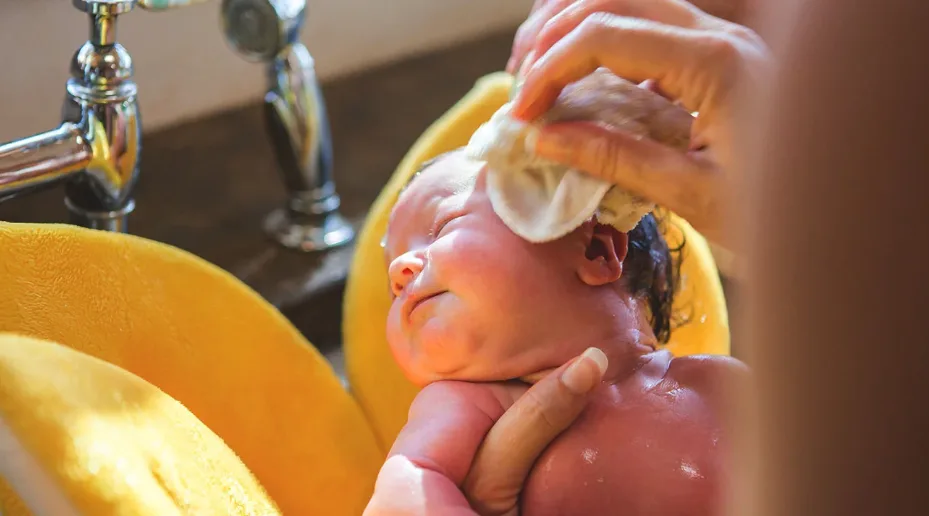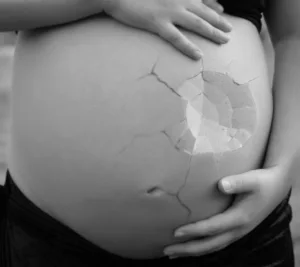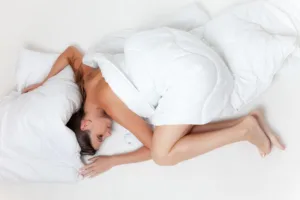
How to clean newborn ears? – Babies’ ears need extra care to ensure that they are clear of any undesired obstructions or hazards to their hearing health, just like those of adults. Nevertheless, because their ears are still developing, newborns’ ears need special attention when being cleaned.
Examine some of the most important issues with ear cleaning for infants and how to preserve their hearing as they develop.
In this article, I will basically discuss how to clean newborn ears? and what you need to do and what you don’t need to do also give you some tips for safe and smooth cleaning.
In This Article
How to Clean Newborn Ears
Newborns and infants share the same ear structure as adults, however cleaning baby ears requires distinct techniques. Because your child is still growing and developing, cleaning them too harshly or intrusively might harm sensitive skin and ear tissue or result in infection.
The best approach to cleaning your baby’s ears is to be careful and use baby-friendly instruments while cleaning both inside and behind their ears. This will keep your baby’s ears clean and safe.
Although there are a number of ways of how to clean newborn ears, you’ll quickly develop hygienic habits that suit your child’s needs as you learn safe methods for cleaning the inside of your baby’s ears and cleaning baby ear wax at home. Your first concern should always be their comfort and safety, regardless of the approach you take.
Using a Washcloath

Although washing your baby’s ears with a washcloth is harmless, bear in mind that this technique is mostly meant to clean the outer ear. Pediatricians also frequently recommend it. To use a washcloth to clean your baby’s ears:
- Use warm water to moisten a fresh, soft washcloth. Verify that the water is not very hot.
- To prevent any water from dripping into your baby’s ears, ring out the washcloth.
- To remove any residue that may have accumulated, wrap the washcloth over your finger and gently rub it around your outer ear.
The Right And Wrong Ways to Clean Your Baby’s Ears
Some crucial dos and don’ts to remember when you have a question in your mind about how to clean newborn ears? at home are as follows:
Wrong Ways
Don’t Insert Objects In Babies’ Ears
Never put anything like cotton swabs inside your child’s ears, whether you’re cleaning the inside or the outside. Using a cotton swab in the ear canal can actually cause earwax to be forced further into the ear in both adult and pediatric ears.
Some may be cleared out, but the force will probably compress the remainder, leading to more accumulation, ear discomfort, or possibly bleeding. Using cotton swabs on babies’ ears can pierce the eardrum and result in even more severe hearing issues because the inner ear tissues are so delicate.
Similarly, you should avoid sticking your fingers in your baby’s ears. Your child’s eardrum may be scratched by your fingernails, which could irritate it further or even rupture it. Additionally, bacteria can accumulate on your fingernails or fingertips, bringing germs and other undesirable substances into your child’s delicate ear canal.
Don’t Use Soap or Water
Never clean your child’s ears with soap and water. If these substances are left in your baby’s ears, they may irritate them or result in ear infections. When cleaning the outside of their ears, make sure to totally wring out your washcloth and avoid putting any soap on it. Carefully tilt their head from side to side to help drain any water that may be dripping into their ear.
Don’t Try To Remove Ear Wax Accumulation By Yourself
Don’t try to remove the ear wax on your own or rely on other at-home techniques if you think washcloths haven’t resolved the issue in your child’s ears. Ear candles for babies’ ears and other home remedies run the danger of harming the ear canal, which may eventually impair your child’s hearing.
Right Ways
Choose Your Cleaning Tools Carefully
Be sure to use sanitized, mild, and soft cleaning supplies. Generally speaking, you should avoid placing anything in a baby’s ears. Employing a different cloth for each ear or washing the cloth in between cleaning the two ears can be a smart idea when employing the washcloth approach.
This may lessen the chance of diseases spreading. You can reduce the possibility of undesirable or dangerous things getting into your baby’s ears by keeping your instruments clean.
Clean Their Ears From The Outside
To safely and gently clean your baby’s ears, follow the washcloth method’s detailed instructions.
Speak With Medical Experts
Before putting matters into your own hands, make an appointment with a medical practitioner if you think your baby’s hearing issues are being caused by the earwax in their ears.
They will be able to examine your child’s ears, determine the degree of obstructions, and suggest safe methods for cleaning your infant’s ears. When figuring out what your child truly needs medically, your pediatrician or an ear, nose, and throat specialist will be a great resource.
Cleaning your baby’s ears can be a safe procedure if done properly. You can safeguard their ear health when cleaning by keeping these cleaning dos and don’ts in mind.
You Can Also Read…
Should You Remove Your Baby’s Earwax By Yourself?
Earwax in infants and adults is nearly the same. This sticky, yellowish material, sometimes referred to as cerumen, is mainly composed of dead skin cells along with ear gland secretions. Earwax is a natural substance that hydrates the ear canal, functions as an antibiotic, repels foreign things, and forms a protective barrier. It is not an indication of inadequate hygiene.
Baby earwax removal is not always required because earwax typically accumulates, dries out, and falls out of the outer ear on its own. You can gently remove earwax from the outside of your baby’s ears if you see it there, but you shouldn’t attempt to remove it from within their ears on your own.

































